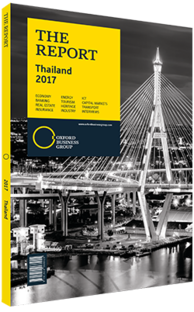Porametee Vimolsiri, Secretary-General, National Economic and Social Development Board: Interview

Interview: Porametee VimolsirI
To what extent did Thailand exceed expectations in 2016, and what is your outlook for 2017?
PORAMETEE VIMOLSIRL: After recorded growth rates of 0.8% and 2.8% in 2014 and 2015, respectively, 2016 saw the economy expand by 3.2%, a rate which we consider to convey a stable and growing economy that is picking up steam. At the beginning of 2016, some forecasters had quite pessimistic views of the national economy, but strong indicators during the first half of 2016 quelled many of those fears, and this held until the end of the year. We estimate the economy will expand by between 3-4% in 2017 as growth is currently coming from a much more extensive economic base.
In earlier periods the economy relied mostly on two major sources – namely government spending and tourism – while exports were quite poor and the agricultural sector was hampered by two years of drought. Since the second quarter of 2016 these sectors have shown significant recovery, and increasing farm incomes, in particular, bode well for consumer spending and overall GDP growth moving forward.
What are the key points of the 12th National Economic and Social Development Plan (NESDP)?
PORAMETEE: The 12th NESDP was approved by the Cabinet and will cover the five years from 2017 to 2021. It addresses a variety of economic sectors and is aimed at ensuring medium- and long-term sustainable growth, while taking into account economic, social and environmental aspects in unison. The plan is fully synchronised with the 20-year, long-term national vision outlined previously by the Thai government.
The 12th NESDP is based on the six areas of the 20-year National Strategy. First, it outlines the national vision of Thailand to become a high-income country through security, prosperity and sustainability. Second, to address inequality we are focusing on inclusive growth rather than poverty reduction. This is undoubtedly a more challenging task but one that is crucial in closing the nation’s income gap. Third, in terms of people and human resources, a key characteristic that continues to define Thailand is its ageing society. Over the next 20 years, 30% of the Thai population will fall within the elderly demographic, so the shrinking labour force must become more efficient and able-bodied, something which links strongly to education and health policy reform. Environment and natural resources are a key part of the global agenda and discourse at present, and Thailand must do its part to fulfil global commitments, even as it develops its natural resources. Security is also a field with renewed focus. While security in Thailand has traditionally been bound to energy and food security, we see new threats such as terrorism and cyberattacks expand the areas that warrant focus. Lastly, we aim to prioritise government transparency and good governance in order to reduce corruption and ensure sustainable growth for the private sector.
How will diversification in industries enable self-sufficient levels of growth?
PORAMETEE: Thailand already has a very diversified production base. With strong agricultural products, both light and heavy industry, and a robust service sector, the economy is already diverse by nature. Of course, sometimes the global economy and external conditions such as weather contribute to adverse trends, but our diversity allows certain sectors to drive growth at times when others are impacted. While this is a strength for Thailand, the nation must look for additional areas for growth, especially with regard to value-added and more innovative products in order to take the next step economically. We have already seen strong investment in areas such as renewable energy, for example, and the government is currently targeting new sectors such as electric cars, aviation and robotics. If successfully implemented, investment in these industries will enable the nation to have among the most diverse and resilient economies in the region.
You have reached the limit of premium articles you can view for free.
Choose from the options below to purchase print or digital editions of our Reports. You can also purchase a website subscription giving you unlimited access to all of our Reports online for 12 months.
If you have already purchased this Report or have a website subscription, please login to continue.

